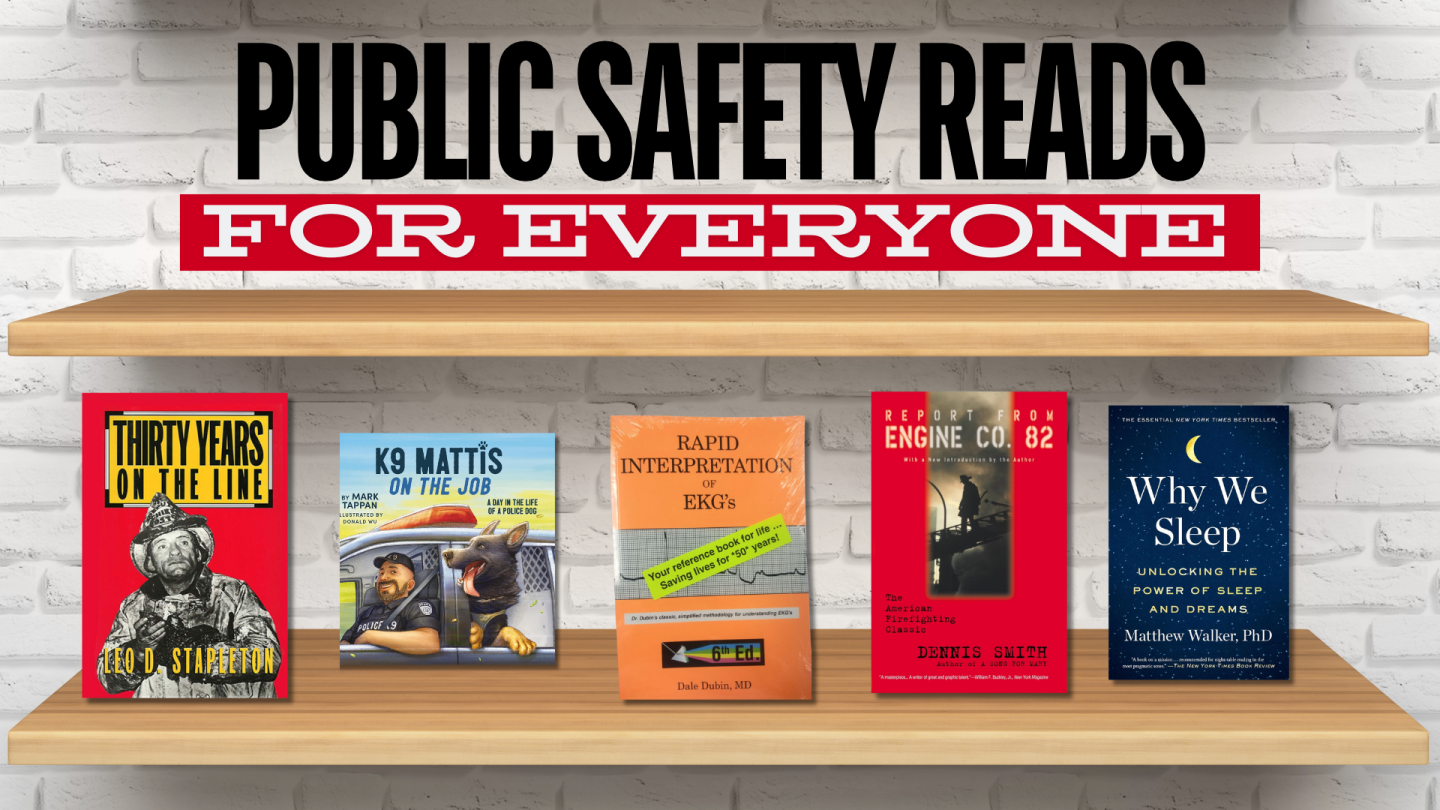EMS Training and Education
Your go-to resource for evidence-based EMS training, continuing education, instructor development and industry innovation. Find expert articles, videos, product reviews and specialized resources to support EMTs, paramedics, medical directors and educators. Stay current on instructor best practices, CEU requirements, virtual training trends, simulation strategies and educational policy affecting prehospital care.
EMS Training and Education Resources
Practical, authentic ways to show gratitude and strengthen community ties with the people who respond first when it matters most
5 tips to quickly find a patient’s radial pulse for vital sign assessment
Educating patients at the highest risk for suffering a fatal overdose
Move with purpose to prevent an apparatus crash, slip or fall, and protect the patient from increased discomfort
Hypothermic patients, multi-systems trauma and slippery scenes present difficult decision-making challenges for rescuers
Support first responders injured in the line of duty, new recruit education and the families of the fallen
Steve Whitehead asks the tough question: Are life-saving interventions turning deadly when managing behavioral health emergencies?
Scene safety and awareness are critical to prehospital patient care
An independent review says incident command wasn’t formally established until 25 minutes after the shooter was in custody and fire crews were dispatched late
End the burnout cycle with proven initiatives to create a more sustainable EMS culture
Seeing the brave first responders on Sept. 11, 2001, showed me what I wanted to be when I grew up
A Galveston officer’s near-fatal submersion has fueled public outrage over EMS response times. Clinical science tells a different story — and reveals why cooperation, not conflict, is needed now.
Dive into a curated collection of must-read public safety books, from thrilling accounts and leadership lessons from the front lines, to read-aloud children’s favorites
Monitoring AVPU and other vital signs will help determine if the patient is improving, worsening or responding to treatment
Miramar College’s two-year program arms veterans and working first responders with advanced emergency management skills to move up the ranks
Why war stories aren’t just fluff; they’re the heart of how we learn and lead
It’s 2025 — why do pediatric calls still make us sweat?
What EMS providers need to know about the physiology behind the Lazarus syndrome to ensure a patient is deceased before declaring death
The “Katrina Declaration and Petition to Congress” calls out reductions to CERT, the National Fire Academy and hazard grants as weakening national disaster readiness
Ed Racht previews new AHA CPR/ECC guidelines and how lessons from SCA can save lives in overdose, bleeding and drowning — just in time for CASSummit 2025
When it feels like gravity is working overtime, learn the skills and mindset to handle fall calls with confidence and compassion
31 EMTs received certificates at the San Antonio Civic Center as Dr. Emily Kidd underscored the profession’s lifesaving impact
Why we need to build active bystandership cultures in emergency services
Bitterroot Health will use funds from the Opioid Abatement Trust to provide tuition assistance for EMTs pursuing paramedic school
Volunteer “patients” with mock injuries, victims of a simulated bleacher collapse, helped University of Iowa’s Stead Family Children’s Hospital rehearse rapid triage and stabilization protocols
Your cheat sheet for spotting kidney dysfunction before it’s too late
What they’ll never tell you about why we stay
Full-time EMTs, paramedics and other EMS leaders can get $1,000 in travel funds, complimentary ReSS registration and a year of AHA membership
Lake County Fire Rescue and First Response Training Group graduated 16 firefighters from an accelerated paramedic program
More than 100 volunteers joined police, firefighters, EMS and school staff in Springfield for a full-scale drill designed to test emergency response
The 2025 CoAEMSP survey underscores a critical need for systemic improvement in how paramedic education programs access and utilize clinical and field resources
Montgomery County Hospital District (MCHD) compares the effectiveness of two parenteral analgesics in the prehospital setting
In a two-day joint exercise with Auburn University and emergency agencies, first responders simulated an active shooter scenario to sharpen tactics
The second installment of the Maine EMS Sustainability Program funding will help Biddeford firefighters attend EMS school and may fund simulation training tools
St. Charles County Ambulance District proves that excellence in airway care starts with culture, not complexity — backed by data, design and relentless feedback
Distinguishing between the conditions starts with fluid history and symptom patterns
MOST POPULAR
- Infographic: Understanding normal and abnormal capnography waveforms
- What you need to know about paramedic school
- How to maximize clinical expertise through everyday experiences
- The growing need for whole blood: Why it’s time for EMS to step up
- Insider analysis: Police sergeant saves NFL player in San Francisco shooting






































